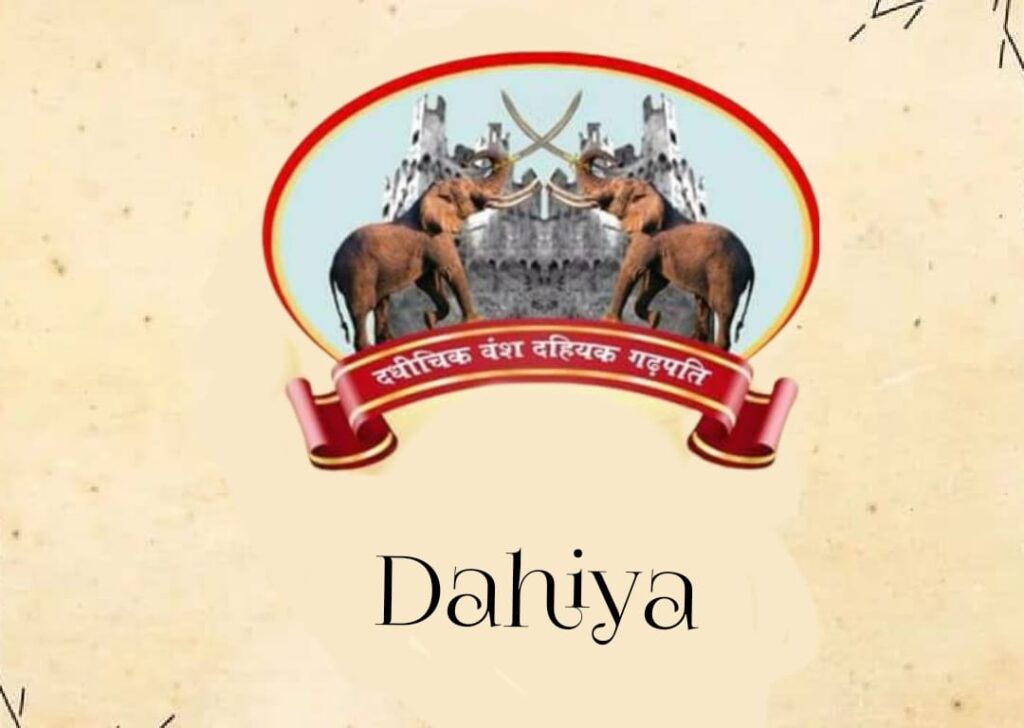Dahiya Dynasty: A Forgotten Legacy of Valor and Governance

Introduction
The Dahiya Dynasty is an ancient Rajput lineage that played a crucial role in shaping the historical and political landscape of northern India. Despite being lesser-known than some other Rajput clans, the Dahiyas made significant contributions to governance, military strategy, and regional administration. Consequently, their influence extended across parts of Rajasthan, Haryana, Punjab, and Delhi, leaving behind a legacy of resilience and strength. Therefore, this article delves into their origins, key rulers, achievements, and cultural impact.
Origins and Ancestry
The Dahiya Rajputs trace their lineage to the Solar Dynasty (Suryavanshi clan), believed to be descended from Surya, the Sun God. Historical records and folklore suggest that the Dahiyas originally belonged to the Sindh and Rajasthan regions, later migrating to areas of Haryana and Punjab. Over time, they established themselves as warriors, administrators, and rulers, earning a reputation for their courage and leadership.
Moreover, the Dahiya name is often associated with great Rajput warriors who fiercely resisted foreign invasions, particularly during the early medieval period. Their military expertise and stronghold over territories made them one of the prominent warrior clans of their time.
Prominent Rulers and Key Events
Several Dahiya rulers made significant contributions to their kingdom and fought bravely to defend their territories. Some of the most notable rulers include:
1. Raja Dahiya Singh
One of the early rulers, Raja Dahiya Singh, is remembered for his valiant efforts in resisting invasions from external forces. His reign was marked by territorial expansion, administrative improvements, and strengthening military defenses. Consequently, he is regarded as a key figure in the Dahiya Dynasty.
2. Dahiya Resistance Against the Delhi Sultanate
During the early medieval period, the Dahiya Rajputs played a key role in resisting the Delhi Sultanate’s expansion into Rajput territories. As a result, they often allied with other Rajput clans to safeguard their land from Muslim invaders.
3. Mughal and British Era
As the Mughal Empire gained prominence, the Dahiya Rajputs adapted their strategies, sometimes allying with Mughals for regional stability. However, during the British colonial rule, they actively participated in freedom movements and revolts against British policies that threatened their traditions and autonomy.
Military Prowess and Strategic Importance
The Dahiya Rajputs were known for their exceptional combat skills, cavalry strength, and strategic warfare. They played vital roles in several historic battles, forming alliances to resist external threats.
- Defenders of Northern India: Positioned in regions like Rajasthan, Haryana, and Punjab, the Dahiyas acted as the first line of defense against invaders from Central Asia.
- Fortifications and Warfare Techniques: They built strong forts and employed guerilla warfare tactics to safeguard their territories. Consequently, their military strategies influenced later Rajput warfare.
- Alliances with Other Rajputs: The Dahiyas often collaborated with Sisodia, Rathore, and Chauhan Rajputs to maintain Rajputana’s independence. Thus, their role in Rajput unity was crucial.
Cultural and Architectural Contributions
Apart from their military exploits, the Dahiya rulers were great patrons of art, culture, and architecture. Some of their contributions include:
1. Forts and Temples
Many forts and temples built by the Dahiya rulers still stand as testimony to their architectural brilliance. Their structures reflect the Rajput style of architecture, known for its intricate carvings and fortified designs. Consequently, these monuments continue to attract historians and tourists alike.
2. Folk Traditions and Literature
The legacy of the Dahiya Rajputs lives on through folk songs, poetry, and historical ballads that recount their heroic battles and sacrifices. Furthermore, many Rajput poets and historians have documented their tales in Rajasthani and Hindi literature.
3. Social and Religious Patronage
The Dahiya rulers supported Hindu temples and local traditions, ensuring the continuation of Vedic rituals and Rajput cultural heritage. As a result, their patronage significantly influenced religious practices in their regions.
The Dahiya Rajputs in the Modern Era
With the abolition of princely states after India’s independence in 1947, the Dahiya dynasty, like many other Rajput clans, saw a decline in its political influence. Nevertheless, their descendants continue to play vital roles in politics, administration, and the armed forces of India.
Many Dahiya Rajputs have contributed significantly to regional and national governance, keeping alive their legacy of leadership and valor. Moreover, their presence remains strong in Haryana, Rajasthan, Punjab, and Delhi, where they continue to be respected for their historical contributions.
Conclusion
The Dahiya Dynasty is an important yet often overlooked chapter in Indian history. From their origins as warriors to their role in medieval battles and governance, they have left an indelible mark on the Indian subcontinent. Consequently, their military exploits, architectural contributions, and cultural legacy continue to inspire historians and heritage enthusiasts.
Even today, the Dahiya Rajputs remain a proud community, cherishing their ancestral traditions while contributing to modern India’s progress. Their story is a testament to the rich Rajput heritage, showcasing their undying spirit and historical significance.







